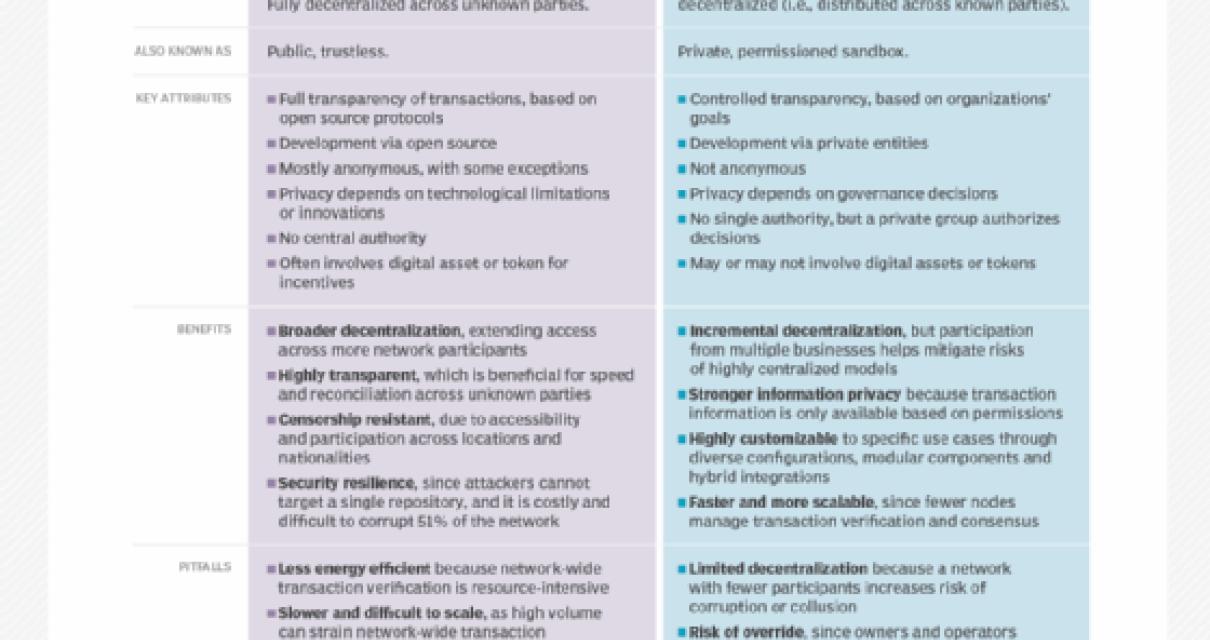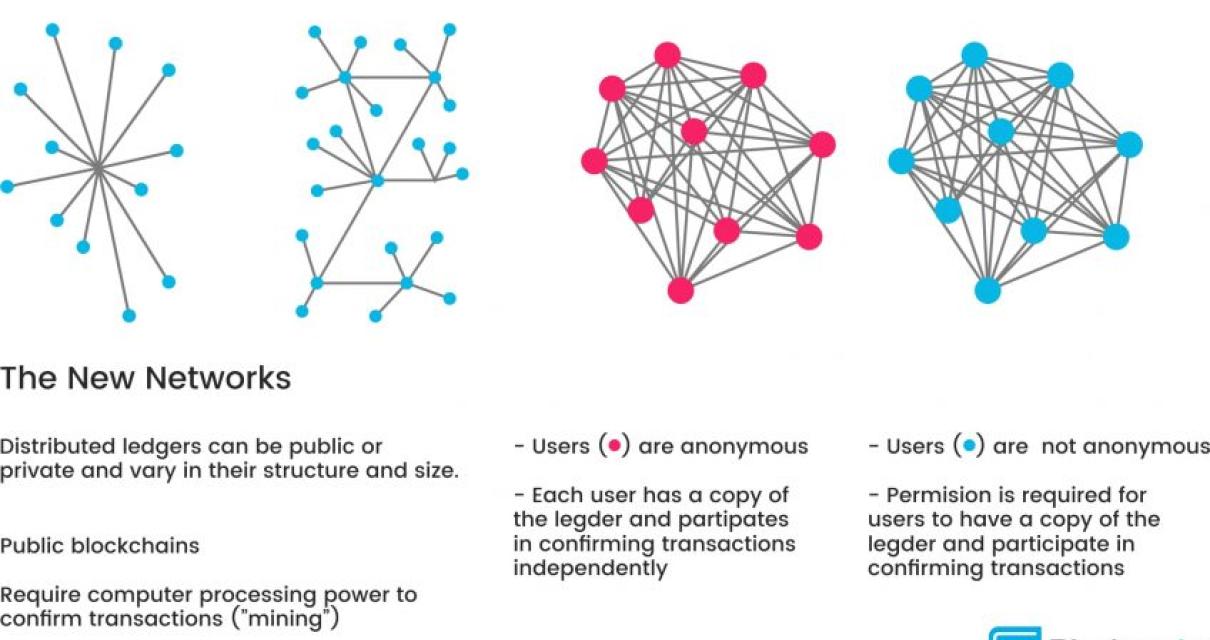Permissioned Blockchains: The New Wave of Blockchain Technology
A permissioned blockchain is a blockchain that is controlled by a specific group of individuals or organizations. Permissioned blockchains allow for more secure and efficient transactions than public blockchains, as they remove the need for a large number of participants to maintain trust in order to conduct transactions.
One example of a permissioned blockchain is the Hyperledger Fabric platform, which is used to create smart contracts and decentralized applications. The Fabric platform is designed to facilitate the deployment of business-critical applications.
Some potential benefits of using a permissioned blockchain include:
1. Increased Security: Permissioned blockchains are more secure than public blockchains because they remove the need for a large number of participants to maintain trust in order to conduct transactions.
2. Reduced Costs: Permissioned blockchains can reduce the costs associated with creating and maintaining a blockchain network, as they require fewer resources to operate.
3. Increased Speed and Efficiency: Permissioned blockchains can speed up the process of creating and deploying decentralized applications and smart contracts.
The Benefits of Permissioned Blockchains
There are many benefits to using a permissioned blockchain. Some of the main benefits are as follows:
1. Increased Security
One of the main benefits of using a permissioned blockchain is that it increases security. This is because only those with permission to access the blockchain can do so, which prevents unauthorized individuals from tampering with the information stored on the blockchain. This is particularly important for sensitive data, such as financial records.
2. Reduced Costs
Another benefit of using a permissioned blockchain is that it can reduce costs. This is because it eliminates the need for a central authority to manage the network and maintain records. This means that the network can be run more efficiently, which in turn reduces costs.
3. Increased Speed
Another benefit of using a permissioned blockchain is that it can increase speed. This is because it allows for faster transactions than what is possible with a traditional blockchain. This is because the network is not as congested, which allows for more transactions to be processed in a shorter amount of time.
4. Increased Trust
One of the main benefits of using a permissioned blockchain is that it increases trust. This is because it allows for more trust between parties involved in the network, which leads to a more secure system. This is especially important for sensitive data, which needs to be protected from unauthorized access.

The Risks of Permissioned Blockchains
There are a few key risks associated with permissioned blockchains. These risks include the following:
1. Centralized Control: A permissioned blockchain is controlled by a centralized authority, which could lead to abuse of power.
2. Fragmented Networks: A permissioned blockchain may be fragmented, meaning that not all nodes are able to access the same information. This could lead to problems with information sharing and consensus.
3. Inability to Scale: A permissioned blockchain may not be able to scale up to meet the demands of a larger network, which could lead to problems with security and reliability.
4. Lack of Interoperability: A permissioned blockchain may not be able to interoperate with other networks, which could lead to problems with data sharing and coordination.
5. Risk of Collapse: A permissioned blockchain may be susceptible to collapse, meaning that the network will be unable to remain operational and will need to be replaced with a new system. This could lead to a loss of data and money.
The Future of Permissioned Blockchains
One of the most important questions that needs to be answered when looking at the future of permissioned blockchains is what the role of permissioned blockchains will be.
At present, permissioned blockchains are used as a way to offload certain tasks from the blockchain network, such as verifying and registering transactions. However, it's unclear whether or not permissioned blockchains will continue to play this role in the future.
Some experts believe that permissioned blockchains will eventually replace the blockchain network altogether. Others believe that permissioned blockchains will continue to play a role in the blockchain ecosystem, but will only be used for specific applications.
Ultimately, it's hard to say exactly what the future of permissioned blockchains will be. However, it's clear that this technology has a lot of potential and is likely to play an important role in the future of the blockchain ecosystem.

What is a Permissioned Blockchain?
A permissioned blockchain is a blockchain where only certain participants have access to the network. This is in contrast to a public blockchain, where anyone can join and participate in the network. A permissioned blockchain is typically used for more sensitive or regulated applications, where customers or participants need to be verified and approved before accessing the network.
How do Permissioned Blockchains Work?
A permissioned blockchain is one in which a selected group of entities known as “permissioned participants” are allowed to access and use the blockchain technology to carry out specific functions. Permissioned blockchains are often used in financial institutions, government agencies, and other types of businesses where it is important to ensure that only authorized parties have access to sensitive information.
This type of blockchain is different from an unpermissioned blockchain, which is typically used by individuals or small groups who want to create a decentralized network without having to worry about the security of their data. An unpermissioned blockchain is not as secure as a permissioned blockchain, and it is not typically used in businesses where sensitive information is involved.

Who Benefits from Permissioned Blockchains?
There are a few potential beneficiaries of permissioned blockchains. These include financial institutions, such as banks, that need to keep sensitive data secure, as well as companies that need to keep their transactions confidential. Additionally, these blockchains could be used by governments to keep track of their citizens' activities.
What are the Disadvantages of Permissioned Blockchains?
The most significant disadvantage of permissioned blockchains is that they are essentially closed systems. This means that users must be approved by the blockchain network operator to join, and once joined, users cannot access or change information on the blockchain. This limits the flexibility and openness of the blockchain platform, which could make it difficult to integrate into existing businesses or ecosystems. Additionally, because the network is limited, permissioned blockchains are not well suited for large-scale transactions or applications.
What is the Potential of Permissioned Blockchains?
There are a number of potential advantages that permissioned blockchains could offer businesses. These include:
1. Increased security: A permissioned blockchain can provide a higher level of security than a public blockchain, as all participants must be approved by the provider.
2. Reduced costs: A permissioned blockchain can be significantly cheaper to operate than a public blockchain, as it does not require the costs associated with mining (such as electricity and hardware).
3. Improved transparency: A permissioned blockchain can provide greater transparency than a public blockchain, as all participants are known and can be tracked.
4. Greater scalability: A permissioned blockchain can be more scalable than a public blockchain, as it can support a greater number of transactions.
5. Increased trust: A permissioned blockchain can provide greater trust than a public blockchain, as all participants must be approved by the provider.